What's the Name of Chinese Dish Have Preserve Mustard With Beef Onions and Vegetables in Black Sauce
Chinese mustard greens, or jiè cài (芥菜) in Mandarin and gai choy in Cantonese, have been cultivated for centuries.
Things can get confusing, however, as there are many different types, each with different uses in the kitchen. Some are stir-fried, prized for their tender and nutritious leaves, while others are harvested for their thick stems, which are pickled and preserved.
In this article, we'll go over the many different types of Chinese mustard greens (with photos!) and talk more about how to use them in Chinese cooking.
What Are Chinese Mustard Greens?
Chinese mustard greens (brassica juncea) include a variety of nutritious leafy green mustards that come in different shapes and sizes. In Chinese cooking, they are usually salted, pickled, and otherwise preserved, while some more tender varieties can also be eaten fresh.
While many Cantonese kids grew up with gai choy and its pickled equivalent (haam choy), Chinese mustard greens have many other varieties and names. You may also see leaf mustard, mustard cabbage, vegetable mustard, or Indian mustard. (This vegetable is also important in Indian cooking.)
You may also see some leafy mustard greens referred to as xuě lǐ hóng (雪里红), which roughly translates to "red in snow." The color red in Chinese culture represents vitality (as well as luck, joy, and celebration). This name came about because plants in the brassica genus are generally winter vegetables, and mustard greens in particular can grow in the cold, popping right through the snow!
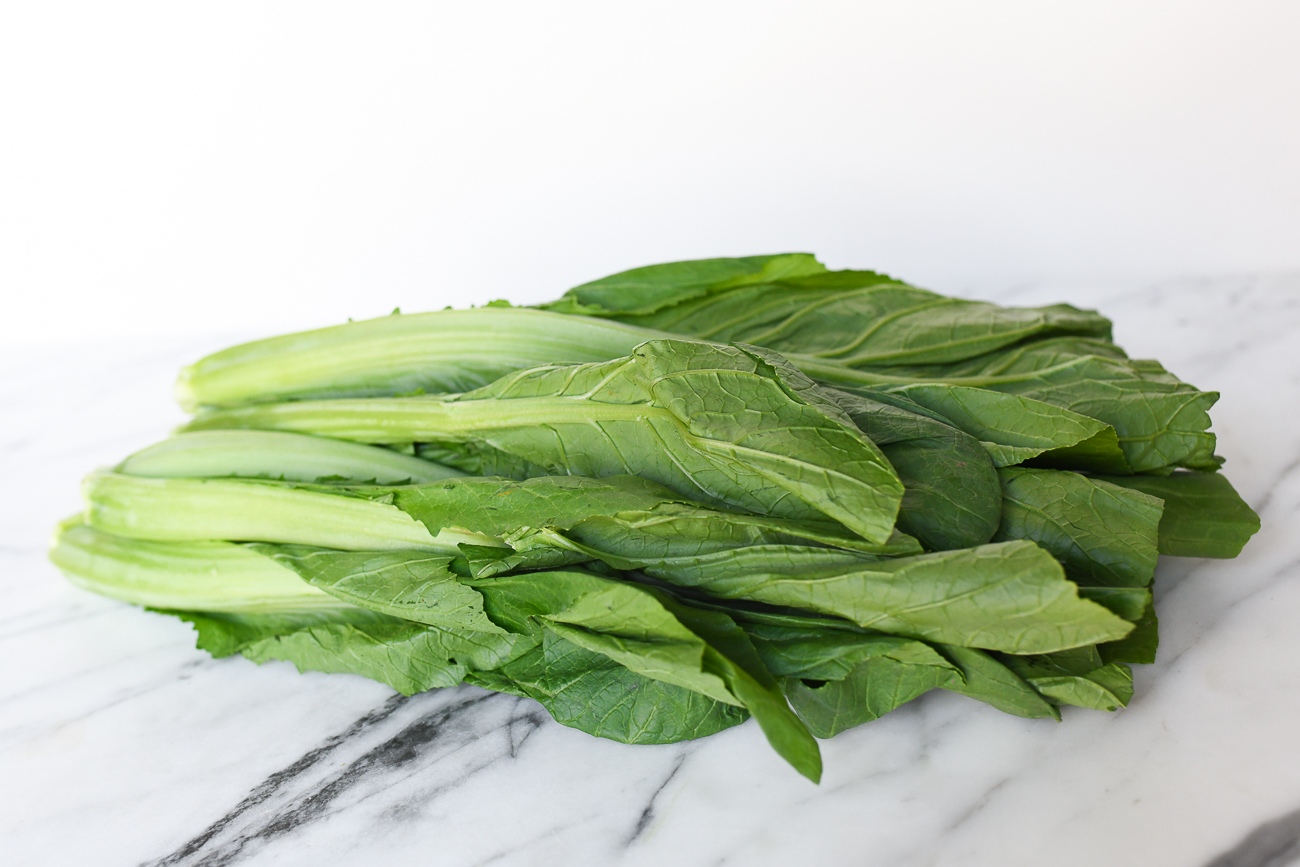
Different Varieties of Mustard Greens & How to Use Them
Let's go over the different types of mustard available and their uses.
Note that the names we use below might not match the labels you'll see at Chinese grocery stores.
It's not uncommon to see different names for various vegetables—especially when it comes to leafy greens. Names can vary depending on where the growers or store staff are from. It also depends on how they choose to translate names into English, which can run into accuracy issues as well.
That's why it's so important to have photos, which we've included below.
1. Large-Petiole Mustard:
Also known as dai gai choy, or "big mustard greens" in Cantonese, this is probably the most common mustard green you can find in Chinese groceries.
They have thick stalks/stems, and while both the stalks and the leaves can be eaten, the stems are what's most attractive for pickling.
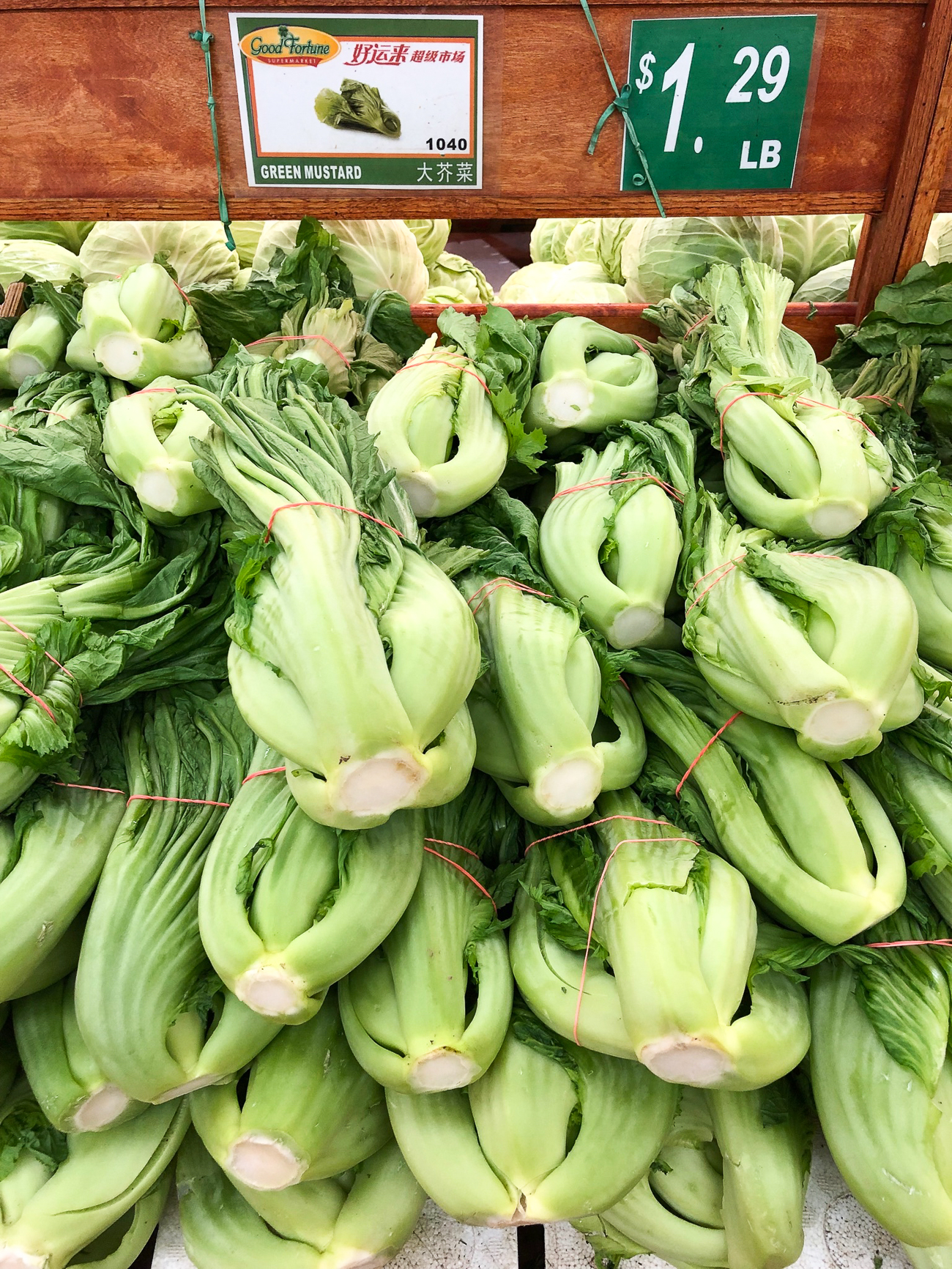
2. Head Mustard:
Also known as swatow mustard or heart mustard, head mustard can also be referred to as dai gai choy in Cantonese. Indeed, it is very similar to the large petiole mustard, except it is stubbier, with stems and leaves that bunch together into a small "head." Think of them as the stubbier version of the large-petiole mustard.
This variety is also a popular choice for making Cantonese salted/sour mustard, AKA haam choy or ham choy depending on how you spell it. It is pronounced "hahm choy."
Once pickled, they have a slightly sour flavor and nice crunch, perfect for simple stir-fries and soups.
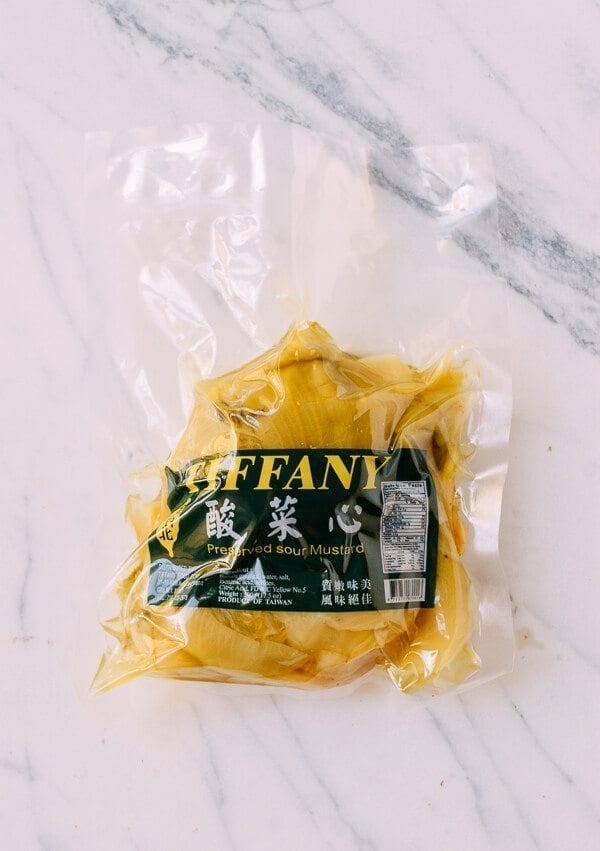
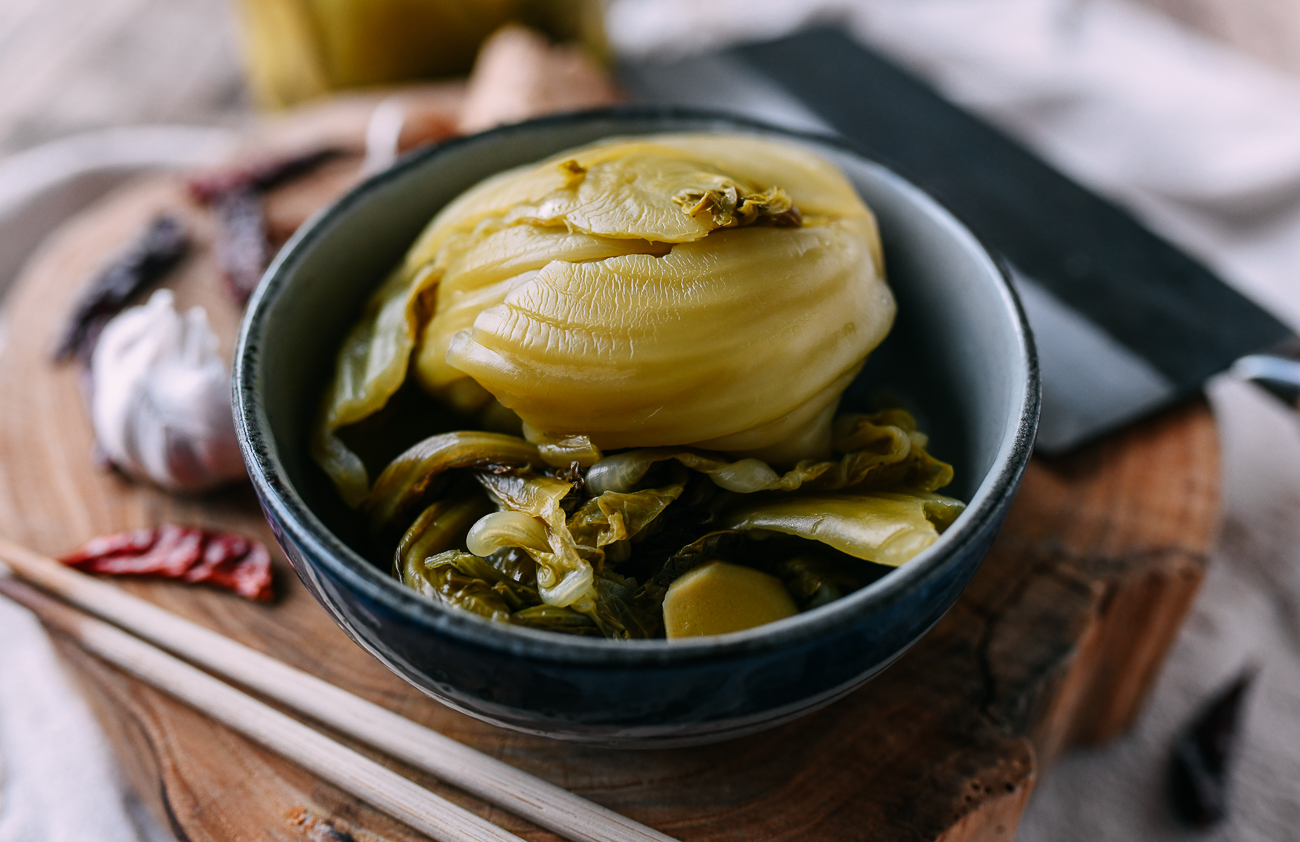
This mustard can be pickled with the leaves and all, but cooks sometimes cut off the leaves and add them to soups while fresh.
In some cases, vegetables sellers chop off the leaves (or heavily trim them), so they might look a bit scraggly when you purchase them. That's how important the stems are—some people don't even bother with the leaves!
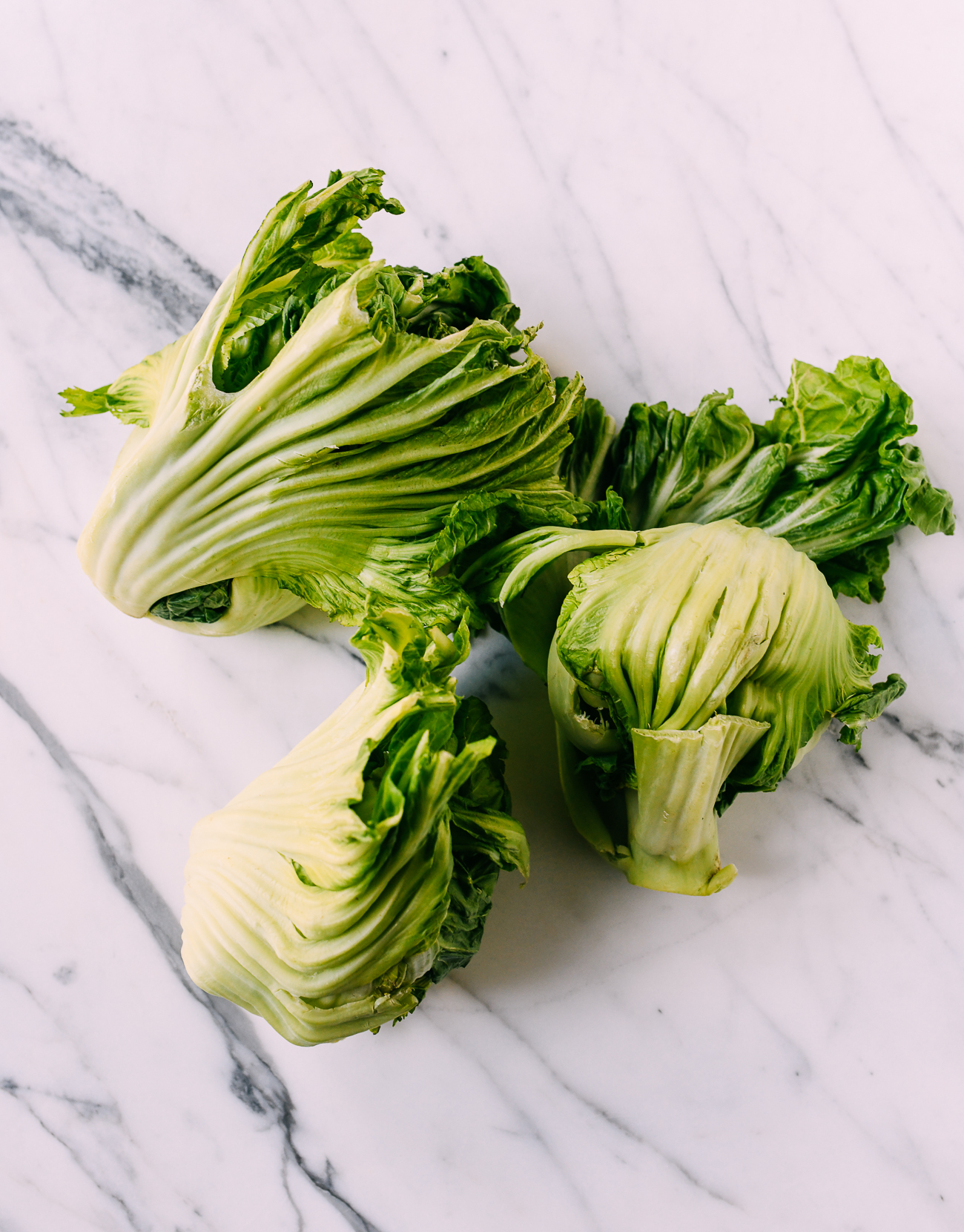
3. Leaf Mustard:
Leafy Chinese mustard greens, also known as snow mustard greens or xuě lǐ hóng (雪里红) in Chinese, are now quite common in Chinese supermarkets.
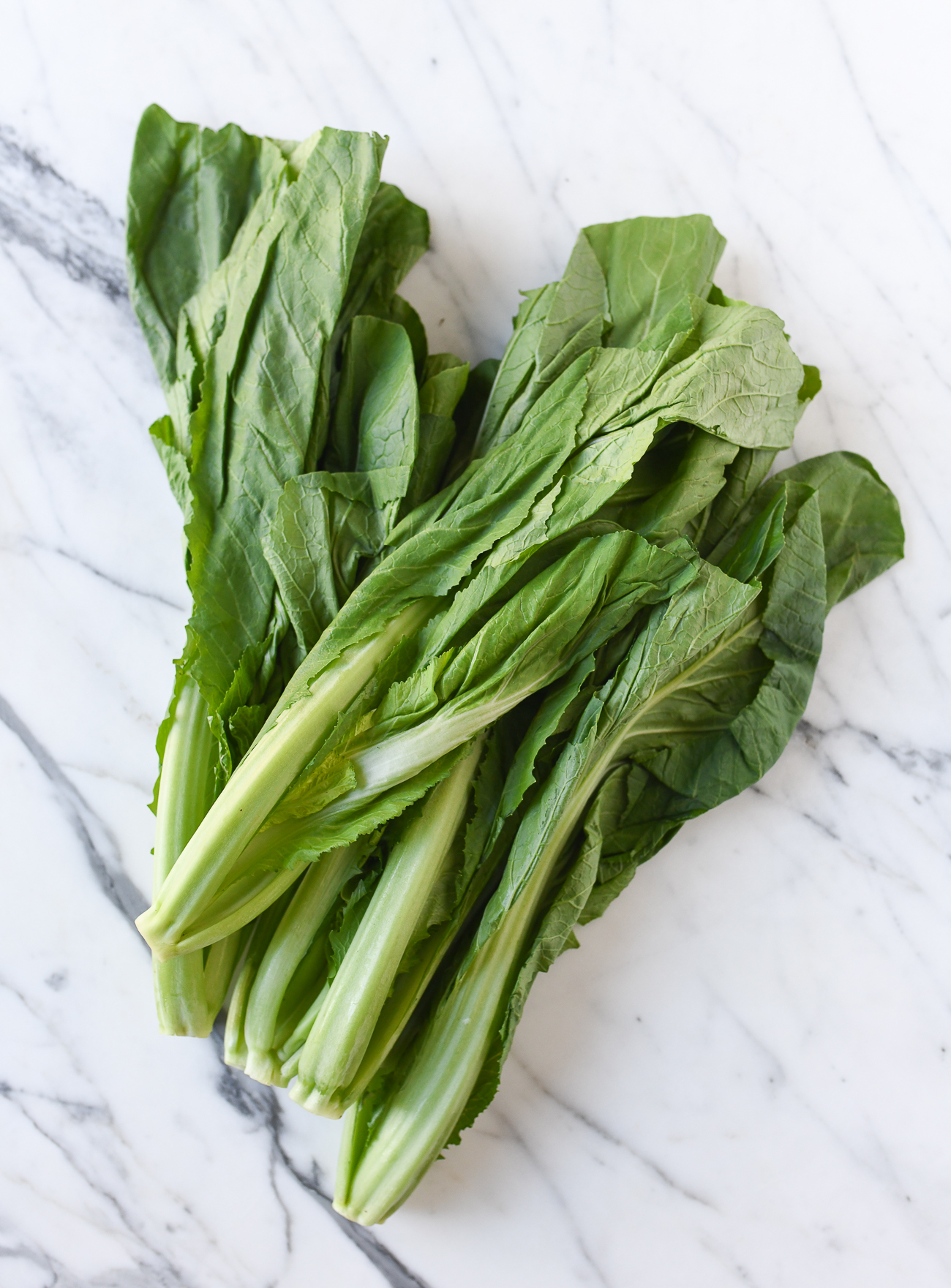
They're leafier, with more tender stems, making them a good candidate for stir-fries. We prepare our own stir-fried xuelihong at home often.
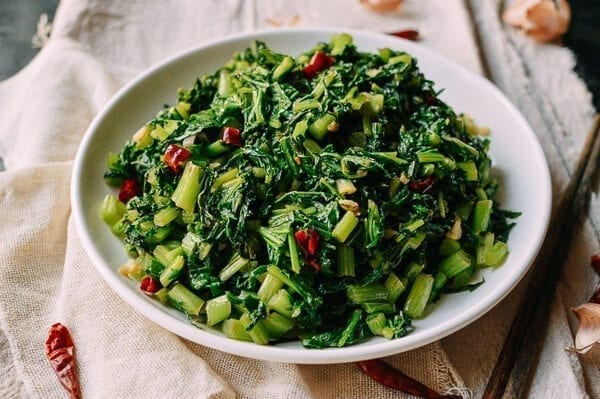
However, like its related cultivars, these leafy mustard greens are also salted and preserved. (Judy used the same technique for making Chinese preserved greens from our own garden kale.)
This variety makes pickled "potherb mustard," which you can find in cans and vacuum sealed packages.
Watch out though. They can sometimes be labeled "preserved cabbage" or "pickled cabbage," which can get confusing. Look for these characters on the label: 雪菜 (xuě cài).
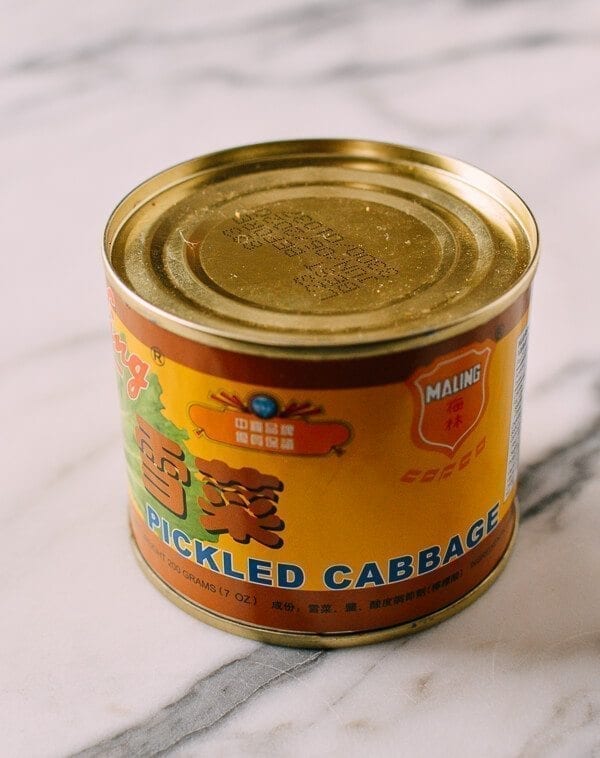
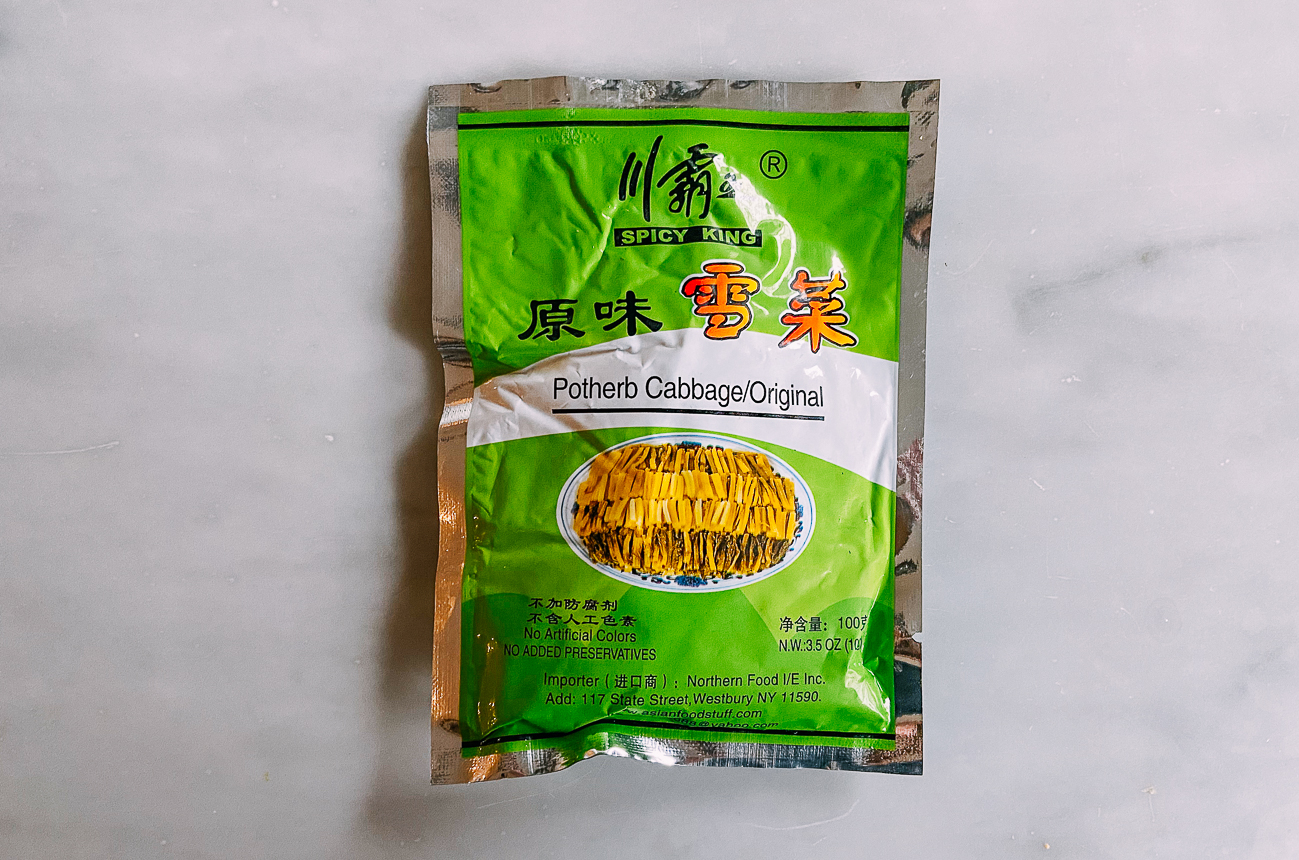
4. Mizuna
Another variety you may come across at Asian produce markets is mizuna, AKA Japanese mustard greens or spider mustard. This variety is not as common.
You can tell it apart from other greens due to its spiky leaves. They look almost like a pointier version of arugula.
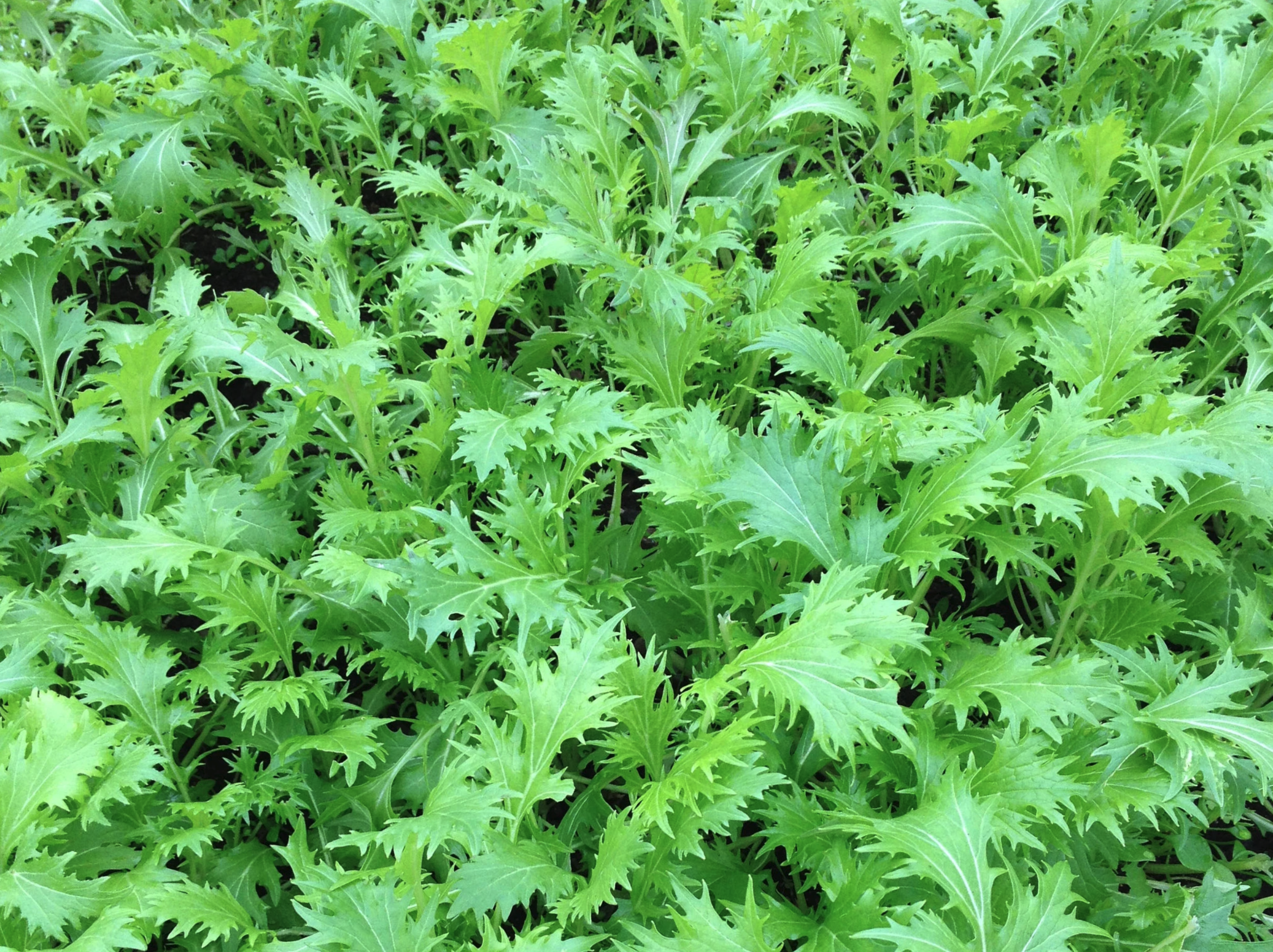
However, don't mistake it for Tong ho (edible chrysanthemum leaves), because the serrated edges of the leaves do resemble it. They have very different flavor profiles.
What Do Mustard Greens Taste Like?
Chinese mustard greens are quite bitter, with a slight peppery taste. You can pre-blanch them and cook them with ginger and/or a little sugar to balance the bitterness.
Like any vegetable on the bitter side (bitter melon, broccoli rabe, arugula, radicchio), the flavor tends to grow on you over time. Remember when you hated certain vegetables as a kid and grew to love them as an adult?
Learning how to cook bitter vegetables properly is key to enjoying them. Using aromatics like garlic, ginger and spicy dried chilis is a great start. Properly salting the greens and adding a pinch of sugar is another easy way soften that bitter edge and enjoy the true flavor of this healthy Chinese leafy green.
Are Mustard Greens Healthy?
Mustard greens definitely fall into the "healthy" category. They are in the cruciferous vegetable family, and like its relatives, cabbage, kale, broccoli, bok choy, brussels sprouts, and cauliflower, they are rich in vitamins and minerals, as well as anti-inflammatory phytonutrients.
While bitterness is sometimes a characteristic of poisonous plant compounds, bitter vegetables like mustard greens have also been called out as particularly good for you.
We'd hear an old saying often from our Chinese elders. "If it's bitter, then it's probably good for you." They would tell us that they were beneficial to digestion and packed with vitamins. Of course, we are not nutritionists or dieticians, so definitely do your own research!
Buying & Storing
You can find Chinese mustard greens in most large Chinese markets these days, though availability does vary. Sometimes we see the larger version of dai gai choy, while sometimes it's only the stubbier head mustard variety.
These days, leaf mustard (雪里红) is also readily available at well-stocked Chinese markets. Look for fresh, bright green leaves and avoid any dry or wilted leaves.
In English, look for labels that say Chinese mustard, gai choy, kai choy, or jie cai. You may see other spelling variations. You can also look for the Chinese characters: 芥菜. Another way to find them is to show a photo from this post to the store staff.
When choosing mustard greens, pick younger, smaller plants. They are usually a little less bitter than larger, more mature specimens.
Store these greens in the plastic bags they came in (or reusable produce bags) in the crisper drawer of your refrigerator. Avoid placing them in the back of the refrigerator, where it's coldest. The leaves are delicate and may freeze. Also be sure to give them some space and avoid piling other items on top of them, or they may bruise.
Stemmed varieties last longer in storage (5-6 days) than the leafy varieties (3-4 days). Of course, this also depends on how fresh they were when you bought them!
Recipes That Use This Ingredient
- Squid Stir-fry with Pickled Mustard Greens
- Stir-fried Mustard Greens (Xuelihong)
- Pickled Mustard Greens (Haam Choy)
Stay tuned for our recipe for Stir-Fried Haam Choy with Chicken, coming out later this week!
Source: https://thewoksoflife.com/chinese-mustard-greens-2/
0 Response to "What's the Name of Chinese Dish Have Preserve Mustard With Beef Onions and Vegetables in Black Sauce"
Post a Comment